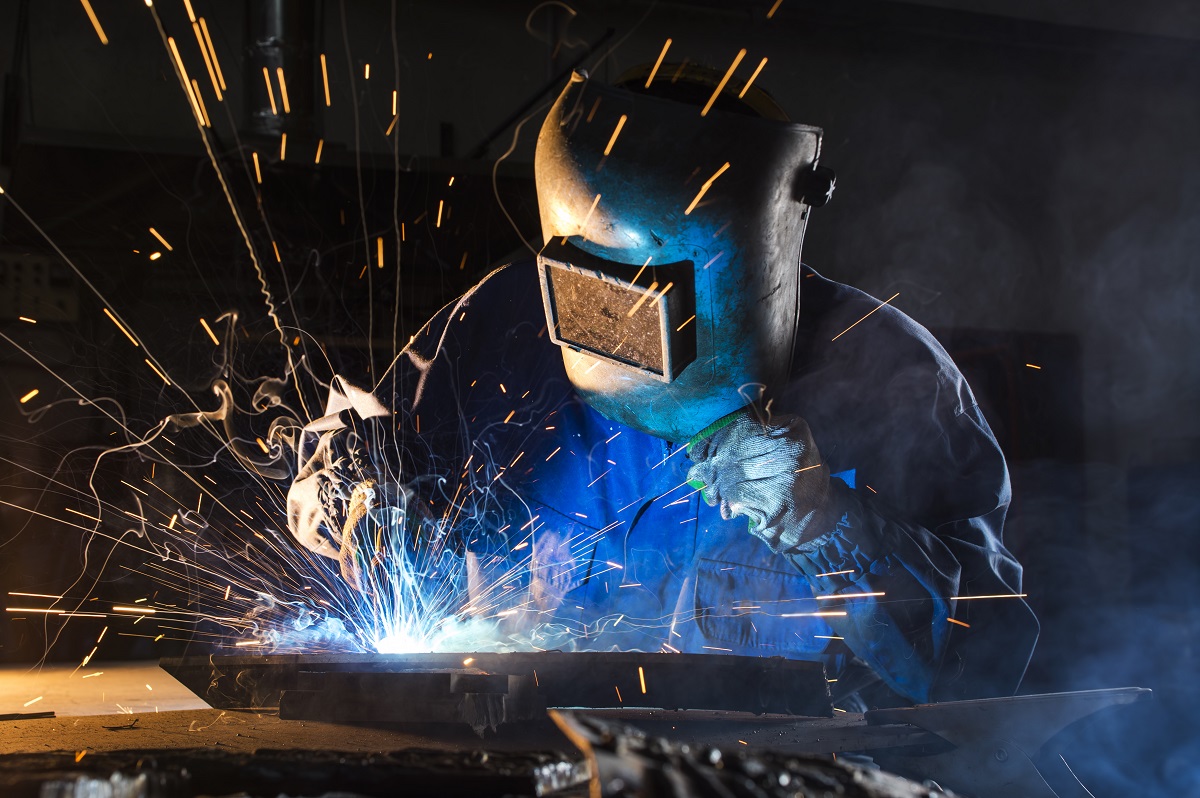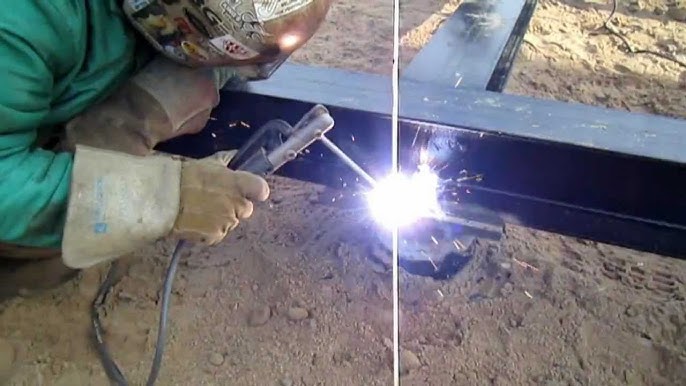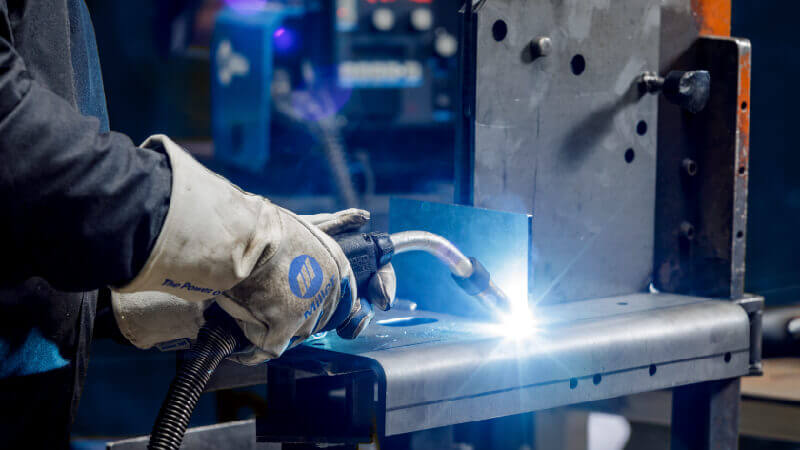Common Welding Fixing Issues and Just How to Address Them Properly
Welding fixings often experience a series of concerns that can jeopardize the integrity of the end product. Typical troubles include inadequate penetration, porosity, and imbalance, to name a few. Each problem presents one-of-a-kind difficulties that require particular techniques for resolution. Comprehending these concerns is essential for welders aiming to improve their end results and abilities. This conversation will check out these typical welding repair work concerns and efficient techniques to address them.
Poor Infiltration
Inadequate penetration happens when the weld steel fails to completely fuse with the base material, resulting in weak joints and possible structural failures. This problem often stems from inadequate warmth input, wrong electrode angle, or inappropriate welding rate. Welders may come across poor infiltration as a result of a mistake of the necessary criteria for a certain material thickness or type. Furthermore, contamination on the base product's surface area can impede effective bonding, intensifying the trouble. To resolve inadequate penetration, welders ought to guarantee appropriate settings on their devices and maintain a clean job surface. Routine assessment of welds is advised to identify any kind of shortages early, allowing for prompt improvements and the avoidance of jeopardized architectural stability in bonded settings up.
Porosity
Porosity is a typical issue in bonded joints that materializes as small gas bubbles entraped within the weld steel. This defect can compromise the integrity of the weld, resulting in decreased toughness and potential failure under stress. Belgrade Fabrication. Porosity typically emerges from contamination, wetness, or incorrect welding strategies, which enable gases to leave right into the molten weld pool. To attend to porosity, welders must guarantee proper surface prep work, maintain a tidy working setting, and utilize appropriate welding specifications. In addition, selecting the ideal filler product and protecting gas can minimize gas entrapment. Normal evaluation and screening of welds can aid determine porosity early, ensuring timely restorative actions are taken, thus protecting the quality and dependability of the bonded structure
Misalignment
Misalignment in welding can develop from different variables, consisting of incorrect setup and thermal development. Understanding the origin is essential for efficient resolution. A number of modification strategies are available to straighten parts and guarantee structural integrity.
Reasons of Misalignment
Welding imbalance commonly originates from a variety of underlying problems that can endanger architectural stability. One key cause is incorrect fit-up of components prior to welding, which can lead to gaps and irregular surface areas. Variants in thermal expansion throughout the welding procedure can also cause distortion, especially if the materials being signed up with have different coefficients of expansion. In addition, poor clamping and fixturing may fail to hold parts firmly in location, resulting in movement throughout welding. Poorly maintained equipment, including welding machines and devices, might introduce variances in the weld bead, more adding to imbalance. Driver mistake, stemming from not enough training or experience, can also play a substantial role in producing misaligned welds.

Adjustment Techniques Available
Addressing misalignment properly requires a combination of corrective methods tailored to the details problems handy. One common method is making use of components or jigs to hold parts in the appropriate setting throughout welding, making sure constant placement. In addition, preheating the materials can help in reducing distortion and improve fit-up. For considerable imbalance, mechanical adjustment strategies, such as utilizing hydraulic jacks or clamps, can be employed to deal with the placement before welding. Post-weld warm treatment may additionally be necessary to eliminate tensions caused by imbalance. Mindful evaluation and adjustment throughout the arrangement stage can avoid misalignment concerns from ending up being substantial problems, promoting a smoother welding process and improving general structural stability.
Distortion
Distortion is a typical difficulty in welding that can develop from various aspects, including uneven heating and air conditioning. Comprehending the reasons for distortion is important for implementing reliable prevention strategies. Addressing this issue not just improves architectural honesty but also enhances the overall quality of the weld.
Reasons for Distortion
When based on the intense heat of welding, materials typically undergo modifications that can bring about distortion. This phenomenon largely emerges from thermal development and tightening during the welding process. As the weld location heats up, the material expands; upon cooling, it gets, which can create inner stress and anxieties. In enhancement, unequal home heating across a workpiece can aggravate these tensions, leading to bending or flexing. The type of product also plays a substantial role; metals with differing thermal conductivity and coefficients of growth may react in different ways, bring about unforeseeable distortions. In addition, bad joint layout and inadequate fixturing can add to imbalance during welding, enhancing the probability of distortion. Recognizing these causes is important for reliable welding repair service and avoidance approaches.
Avoidance Techniques
Efficient prevention methods for distortion throughout welding concentrate on controlling heat input and guaranteeing correct joint style. Keeping a regular warm input aids to reduce thermal growth and contraction, which can lead to distortion. Using techniques such as pre-heating the workpiece can additionally decrease the temperature level slope, advertising consistent heating. Furthermore, picking ideal joint designs, such welding and fabrication shops near me as T-joints or lap joints, can boost stability and minimize stress and anxiety concentrations. Applying correct fixturing to protect the workpieces in position better aids in preserving placement throughout the welding process. Finally, staggered welding sequences can distribute warmth extra equally, preventing localized distortion. By applying these approaches, welders can considerably decrease the probability of distortion and improve the general high quality of their welds.
Breaking
Fracturing is an usual concern come across in welding repair work, often arising from numerous variables such as inappropriate air conditioning prices, material option, or insufficient joint prep work. The occurrence of fractures can substantially endanger the stability of the weld, resulting in prospective failings during procedure. To address this issue, welders need to first examine the source, ensuring that materials work and appropriately selected for the specific application. In addition, regulating the air conditioning price during see post the welding process is crucial; fast air conditioning can induce anxiety and lead to breaking. Appropriate joint layout and preparation additionally add to lessening the threat. Implementing these methods can boost weld high quality and longevity, eventually minimizing the possibility of fracturing in finished weldments.

Insufficient Fusion
A substantial concern in welding repair services is insufficient fusion, which takes place when the weld steel does not sufficiently bond with the base product or previous weld passes - Montana Mobile Welding and Repair Welding. This defect can result in weaknesses in the joint, potentially jeopardizing the integrity of the bonded framework. Variables adding to incomplete blend consist of inadequate heat input, inappropriate welding technique, and contamination of the surfaces being joined. To address this concern effectively, welders must assure appropriate pre-weld cleaning and surface area preparation, in addition to change their welding parameters to attain sufficient infiltration and fusion. Routine inspection throughout the welding procedure can likewise help determine insufficient blend early, permitting timely corrective steps to enhance the general high quality of the weld
Overheating
While welding repair work can enhance architectural integrity, overheating offers a significant obstacle that can bring about material degradation. Excessive heat during welding can modify the mechanical homes of metals, leading to lowered toughness, boosted brittleness, and warping. This phenomenon is particularly essential in high-stress applications where structural reliability is paramount. Identifying overheating can involve aesthetic evaluations for discoloration or distortion, along with keeping an eye on temperature during the welding process. To mitigate the threats connected with overheating, welders must employ proper strategies, such as managing heat input, adjusting traveling speed, and utilizing ideal filler products. Furthermore, implementing pre- and post-weld heat therapies can aid restore material residential properties and boost the overall high quality of the repair service, making certain lasting efficiency and safety and security.
Often Asked Concerns
What Are the Typical Indicators of a Welding Flaw?

How Can I Test My Welds for Top quality?
To evaluate welds for quality, one can use aesthetic examinations, ultrasonic testing, and radiographic approaches. Each technique assures architectural honesty, identifies defects, and validates adherence to defined requirements, ultimately enhancing the integrity of the welded joints.
What Security Precautions Should I Take While Welding?
When welding, one ought to prioritize safety by putting on ideal personal protective equipment, ensuring proper air flow, protecting flammable products away, preserving a clean workspace, and knowing surroundings to avoid accidents and injuries.
Can I Repair a Weld Without Redesigning the Entire Joint?
Repairing a weld without redesigning the whole joint is feasible, depending upon the damages (Belgrade Welding). Techniques such as grinding, including filler product, or utilizing a welding process can efficiently deal with particular problems while protecting the bordering framework
What Devices Are Vital for Efficient Welding Repair Works?
Essential tools for efficient welding repair work include a welding device, check my site wire brush, mill, protective gear, clamps, and filler products. Each device plays an important duty in making sure quality and safety throughout the repair service procedure. Porosity generally emerges from contamination, moisture, or improper welding techniques, which allow gases to leave into the molten weld pool. Inadequately conserved tools, consisting of welding makers and tools, may present variances in the weld grain, additional adding to misalignment. When subjected to the extreme warmth of welding, products commonly go through modifications that can lead to distortion. Cracking is a common concern run into in welding fixings, commonly resulting from numerous variables such as improper cooling prices, product choice, or poor joint prep work. A considerable issue in welding repairs is insufficient blend, which happens when the weld metal does not properly bond with the base material or previous weld passes.